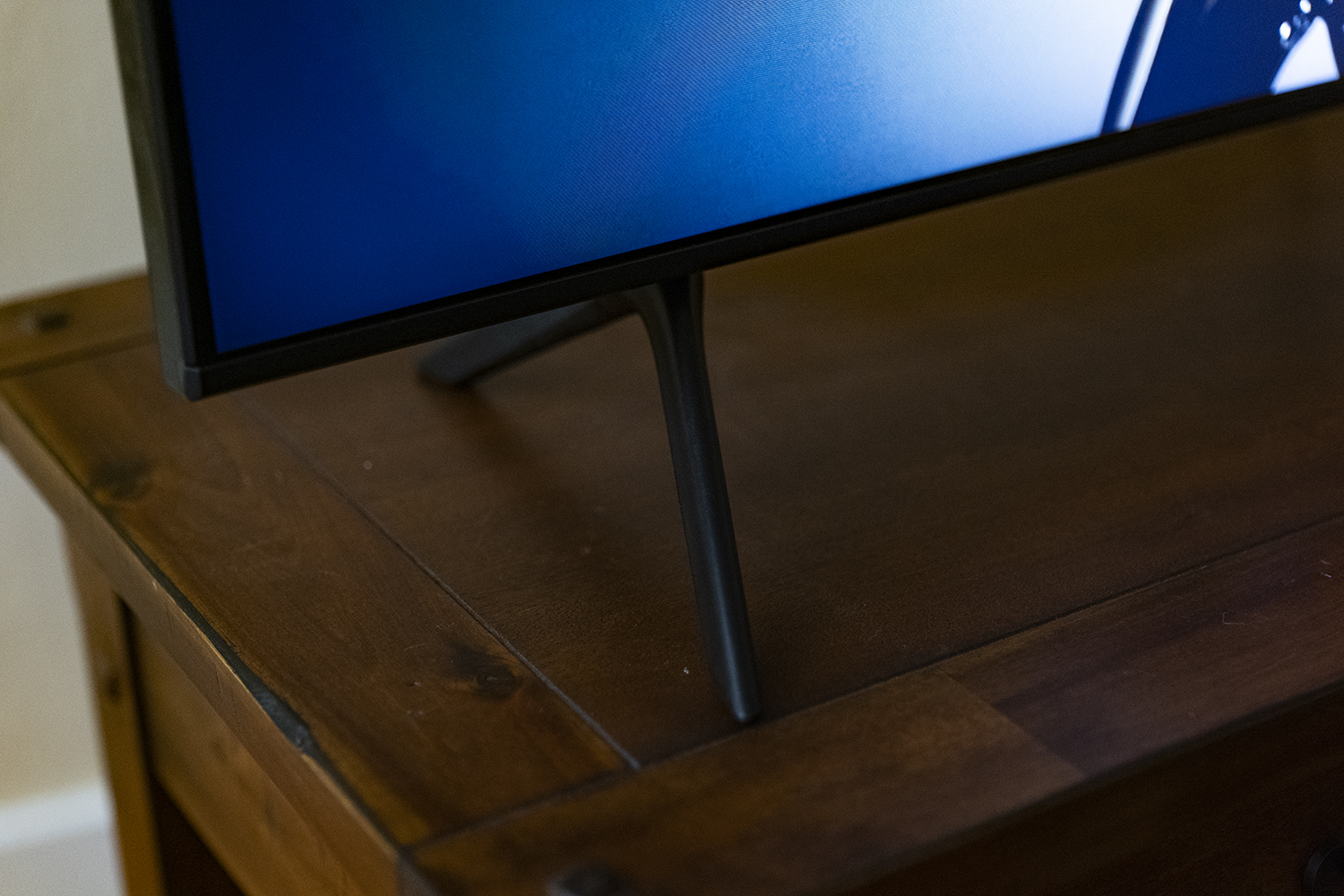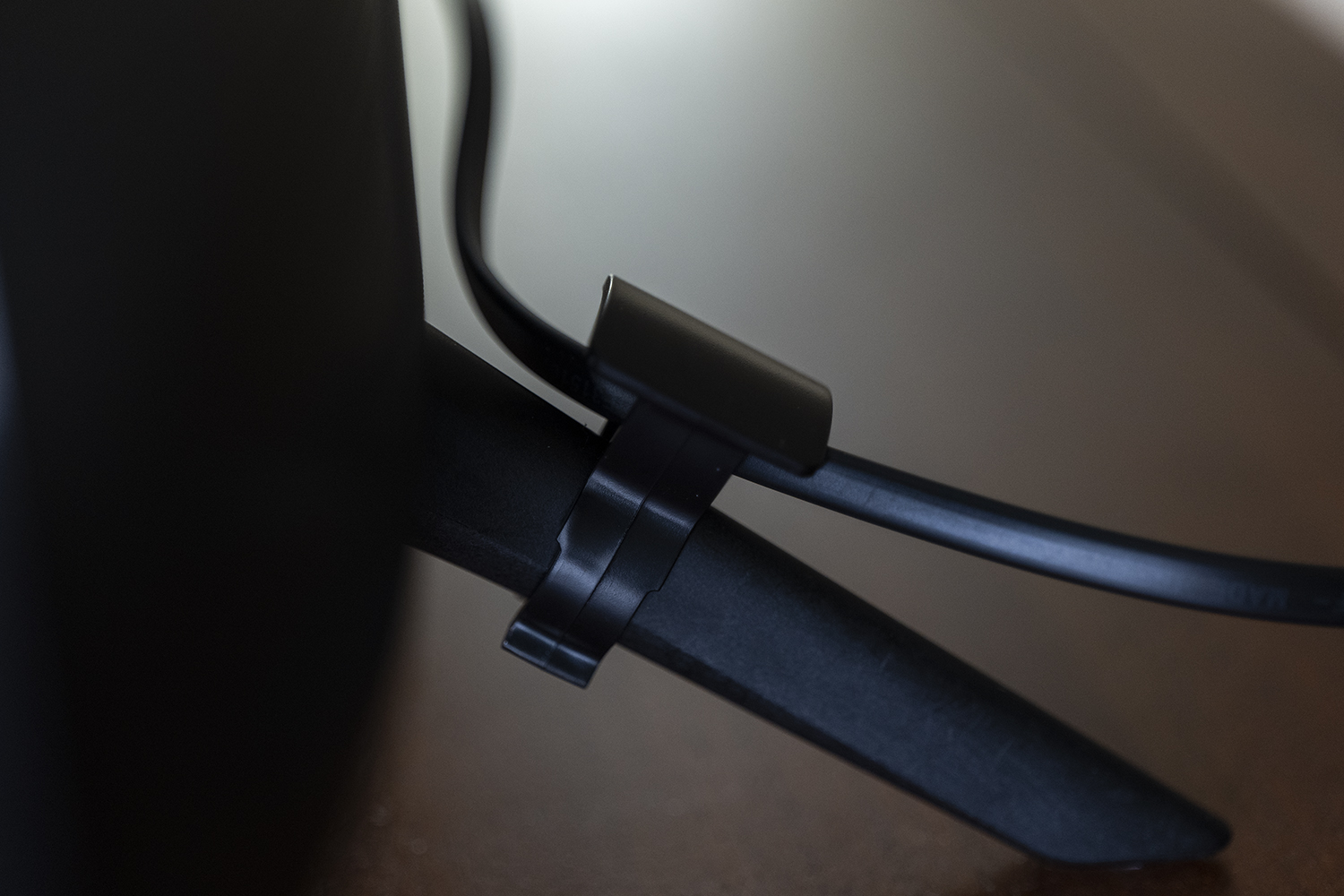“The Samsung TU8000 hits about par for the course, which is great for a budget-friendly set.”
- Attractive, slim bezel design
- Excellent 1080p upscaling
- Good color reproduction
- HDMI eARC support
- Aggressive vignette
- Contrast is muddied in complex scenes
- Not especially bright
It may not be QLED, but the Samsung TU8000 Crystal UHD HDR TV promises amazing color, a high contrast ratio, and stellar HDR reproduction at just $500 for a 55-inch set. That’s a lot of promise for not a lot of money, especially since the design of this TV features a very attractive thin bezel.
Samsung also promises a top-tier upscaling 4K system thanks to its 4K processing and an Auto Game Mode that it claims optimizes the screen and minimizes input lag. For what is clearly a budget-friendly television, Samsung has packed the TU8000 with a lot of expectations. But does it deliver?
Out of the Box
I always appreciate a television that ships with the need for minimal setup, and the TU8000 delivers in that regard. With only the remote, its batteries, two feet, two cable management clasps, and a power cable, this Samsung was gratefully easy to get out of the box and put together. No screwdriver required, the feet just slip into position and hold in place. Those feet are plastic and don’t have the nicest feel to them, but they look fine from a distance and definitely get the job done. Once up and on your media stand, the TV feels secure and stable.
I am less than enthused about those aforementioned cable management claps, though. They are light plastic clips that sit on the backs of the TV’s feet and don’t feel particularly sturdy and are also pretty unattractive, which is a bummer considering how good the rest of this TV looks from the front. You can hide the cable and clasps pretty well, but it’s certainly not perfect and I was left wishing for a better solution here. There are also some grooves in the back of the television that can be used to tuck the cable into, but it doesn’t stay particularly well and the power cable is pretty short too, which additionally limits your options here.

The voice remote that ships with the TU8000 is just like other modern Samsung remotes, with a slim and curved profile that houses only absolutely necessary buttons. I appreciate how small it is while still giving me all I need to enjoy content. It’s a voice remote that works with apps like YouTube when you are in a search bar, and also functions as a smart Assistant with Google Assistant, Bixby, or Amazon Alexa (whichever you choose at setup).
Features and Design
It’s not a top-of-the-line Samsung and is most definitely a plastic-y build, but the TU8000 for the most part manages to pull off the look of one. The rear of the television isn’t particularly impressive, with a full rounded plastic back that doesn’t scream “high end,” but luckily you will rarely be looking there. From the front, the TV’s slim left, right, and top bezel design is clean and attractive. The base is a bit thicker but is lined with a silver plastic that blends in nicely and, at least from a distance, looks expensive.
From the front, the TV’s slim left, right, and top bezel design is clean and attractive.
Like other Samsung televisions, the TU8000 is powered by the Tizen smart TV system. Setup was easy and pleasant, made extremely fast by the connection with the Samsung SmartThings app. Though you don’t need the app, it will dramatically speed up setup times thanks to giving you access to a full keyboard (instead of having to punch in your email and Wi-Fi password one letter at a time with the remote).
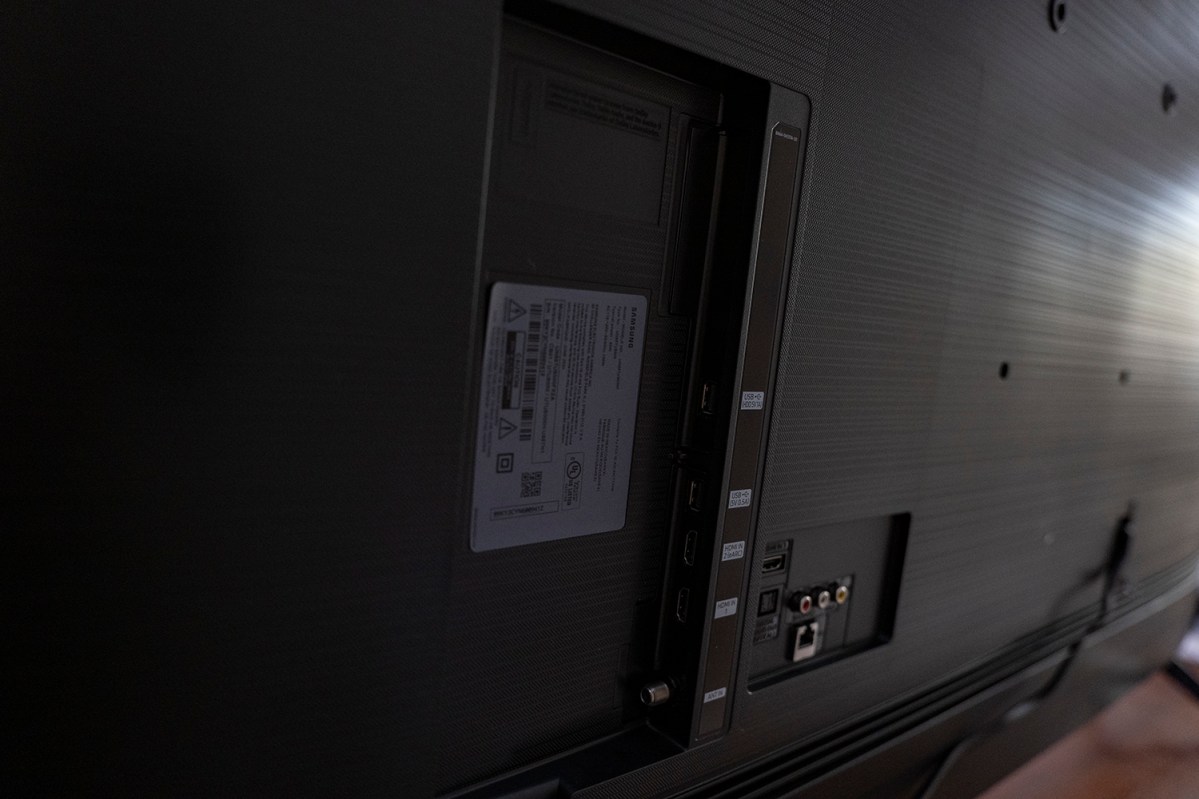
The TU8000 has three onboard HDMI inputs, with only one of them an eARC port. Samsung did not include the nice processing found in its higher-end models like the Q90T, so you won’t see any reduced artifacting or banding in low bitrate content, unfortunately. More on that and other notes on the picture quality in a moment.
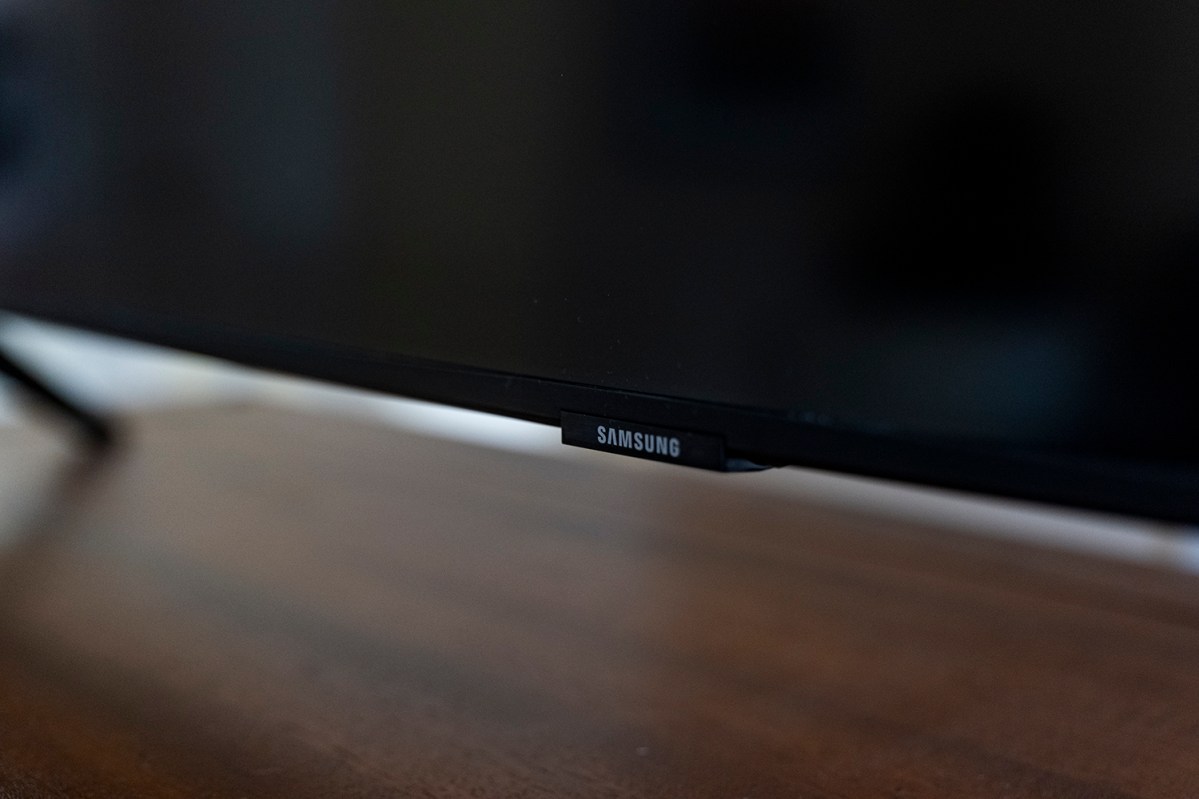
Ease of Use
The Tizen smart TV experience is … fine. As we’ve said before, it’s a perfect example of “good enough,” though it’s not always giving its best on this particular TV. Weirdly, navigating to different apps or content in the Tizen interface shows some lag and is therefore slow and plodding, but the performance of the apps themselves is snappy and pleasant. So while I did not enjoy turning the TV on and selecting the app I want to use, I did enjoy the interface once I was into Netflix, Amazon Prime, or YouTube. Tizen’s other downside is that it is not as robust as other streaming platforms like Roku or Android TV. For example, it doesn’t have a Crunchyroll app. This probably won’t bother a majority of folks though, since it has a full lineup of the more popular apps.
In general, though Tizen gets the job done, it’s also cluttered with a lot of unnecessary and irrelevant watching suggestions. You can largely avoid these, but due to the input lag on the Tizen navigation, I would sometimes accidentally hit “down” one too many times and become inundated with a full screen of badly suggested content. Part of what makes Tizen nice is how it generally only takes up a quarter of your screen when you’re moving among apps, changing your source, or adjusting your picture. When Tizen breaks from that is when it shows its flaws.
And as we’ve mentioned with other Samsung Smart TVs and as I touched on above, though yes it does support smart assistants that are (gratefully) not just Bixby, the voice integration isn’t as good as it is on, say, an Android TV. Here, it’s a bit clunky and disjointed, but it works.
Picture Quality
It should come as no surprise that if we found some screen uniformity problems in a high-end Samsung television this year, they would also exist in the lower end TU8000. There is some particularly aggressive vignetting on this TV, and it’s very inconsistent from each corner. For example, the upper left-hand corner on my review sample exhibited some of the worst vignetting, with the lower-left being a bit less aggressive. That said, all four corners clearly have problems here. Even with letterboxed content, the vignette was clearly visible.
This TV is not one that uses local dimming zones but is instead edge-lit. This is an older, cheaper technology that offers less control of brightness and black levels. As a result, there is some considerable blooming coming predominantly from the lower portion of the television whenever there is a bright subject on a dark background. In particularly high contrast shots, the scenes can get washed out by that bloom.
Halo effect also occurs around bright objects but isn’t as bad as I was expecting. With small sources like subtitles, you can see about a half-inch of halo around the letters, while with larger sources it can grow to about an inch and a half. It’s not super noticeable in most cases, but it is there.
Edge-lighting-induced blooming can really wash out what the panel is trying to do and makes for a generally muddy view.
Contrast is, overall, only ok on the TU8000. I think that the panel is capable of good black levels, but in too many scenes the aforementioned edge-lighting-induced blooming really washes out what the panel is trying to do and makes for a generally muddy view. The Mandalorian, which I also used to test banding with low bitrate content thanks to the many wide shots of clear skies, seemed less punchy than I am used to, with blacks and whites kind of running together into a middle gray. It doesn’t by any means make the content unwatchable, though.
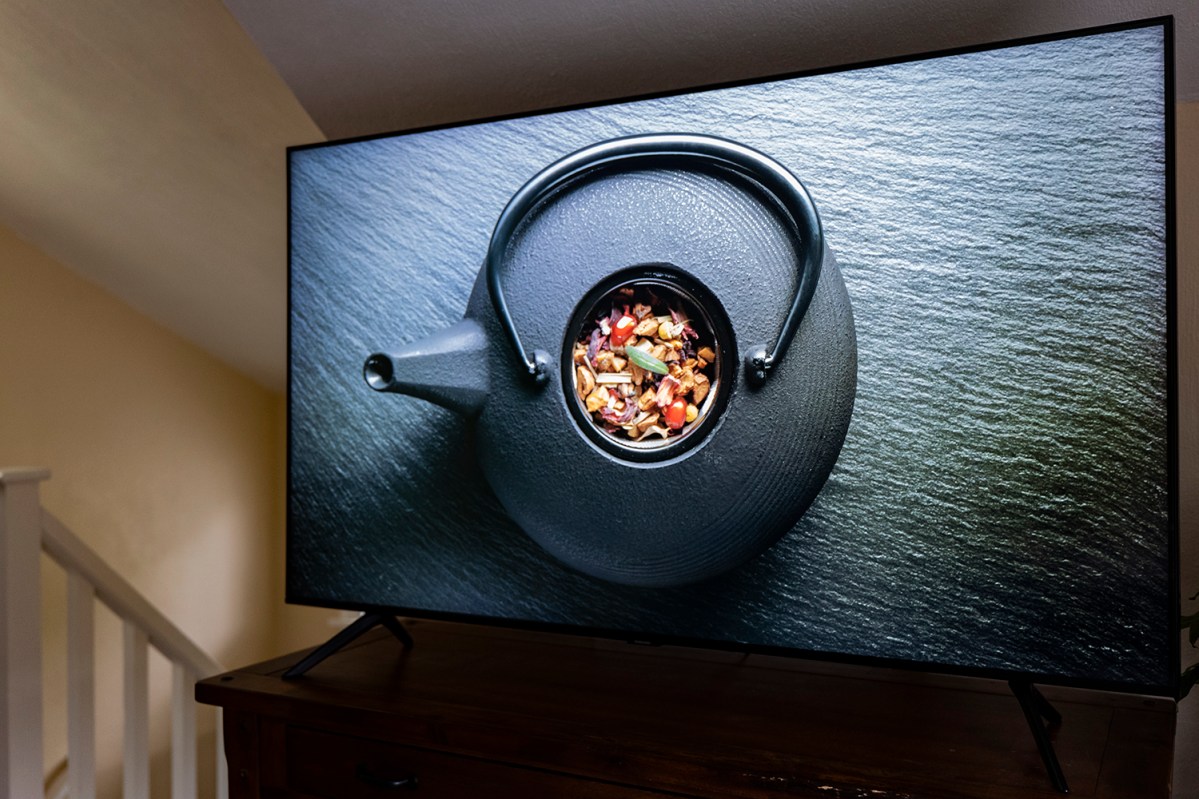
In less challenging scenes where there is a more compact range between highlights and shadows, the TU8000 performs much better. There is a 12K aerial video of a nighttime flight over New York that we like to use as a baseline, and watching the slow pan up Times Square looked very good on this television. Darks were well represented, and as the bright lights came in from the top of the screen, the TU8000 did a fairly good job keeping the picture where it should be.
In other challenging scenes, the TU8000 was able to balance shadow and highlight detail fairly well. It can again borderline on washed out, but the detail was not lost; the TU8000 at least doesn’t crush blacks. The quality isn’t on par with what we’ve come to expect from top-tier TVs, but for this price point, I was satisfied.
Samsung was right to tout the 1080p upscaling: It’s fantastic.
Color accuracy out of the box is pretty good, even in Standard (but stay away from Dynamic). Movie mode reduces Samsung’s processing of sharpness down to zero, which is great to see, and the contrast is better in this mode than in Standard. In both Standard and Movie, skin tones could use a bit of work as there is a lot of nuance that seems lost, but greens and blues are pretty nice.
The TU8000 leans more towards yellow in Movie mode, and more towards blue while also being way over-sharpened in Standard mode. In both cases, the balance is thrown off a bit but is tolerable. This can probably be fixed with some dedicated calibration but seeing as this TV is aimed at the more general consumer and not a pixel-peeper, I say don’t bother. Most will be perfectly happy with this TV in Standard (the horror!) or Movie mode, and that’s honestly a relief to report. This TV needs to look good out of the box because the average customer won’t touch a single setting, and I have to say it does well in that regard (though you really have to turn off the motion smoothing).
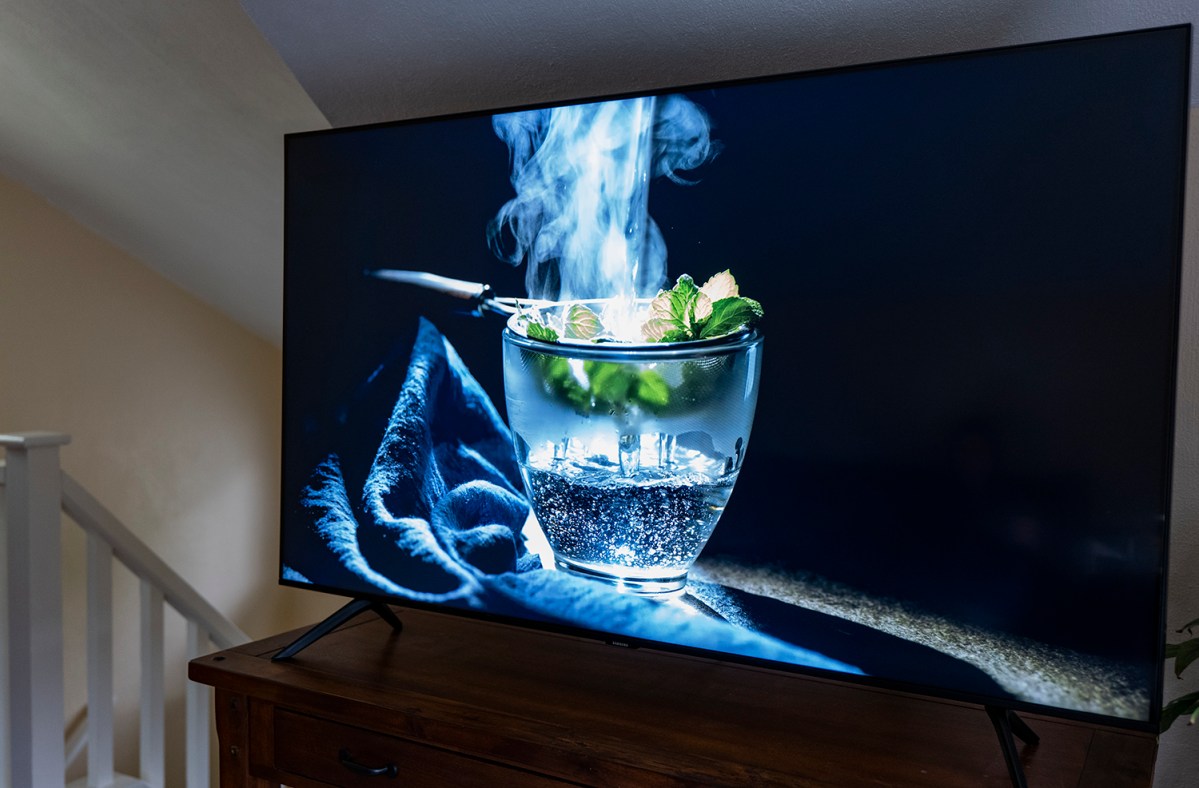
Brightness is sufficient, but some of the extra bleak content like Netflix’s Dark is a bit of a challenge to watch during the day. Certainly do-able, but I had to squint. However, shows like The Mentalist (via Amazon Prime Video) look fantastic no matter when I was watching. Speaking of The Mentalist, the TU8000 showed off its upscaling prowess there wonderfully, as that aged 1080p stream look fantastic on the 55-inch set. Samsung was right to tout the 1080p upscaling: It’s fantastic.
Gaming Performance
This is an ok television for gaming, at least for now. Samsung says the TU8000 has gamer features that reduce latency, but this TV does not have a variable refresh rate and therefore cannot remove judder and additionally is capped at displaying content at 60Hz.
I can confirm that while the input lag is reduced from what is typically found in most televisions while in Game Mode, it’s not as fast as a competitive gamer is going to want to see in situations where you need split-second reaction times. It is certainly good enough for casual single-player games but is still a bit too slow for more intense, action-oriented online games like Apex Legends, top-tier Fortnite play, or Call of Duty.
The performance here is probably good enough for most games in the current generation of consoles, but it’s not going to be able to play at maximum specifications with the next generation due in the fall of 2020.
Sound Quality
We don’t normally talk too much about sound quality with modern flatscreen televisions, and I wasn’t going to consider it at all when I got this TV in for review. However, I was really impressed with the TU8000. Not only can it get pretty darn loud, but the sound quality is also shockingly balanced. I absolutely recommend getting a soundbar or sound system for any television (my personal favorite are The Fives from Klipsch), but if you’re going to go without, you honestly might not feel too badly about that choice.
Sound will work best in a smaller room, so if you planned to pick one of these up for a guest room or the bedroom, I think you’ll be pleased with the audio.
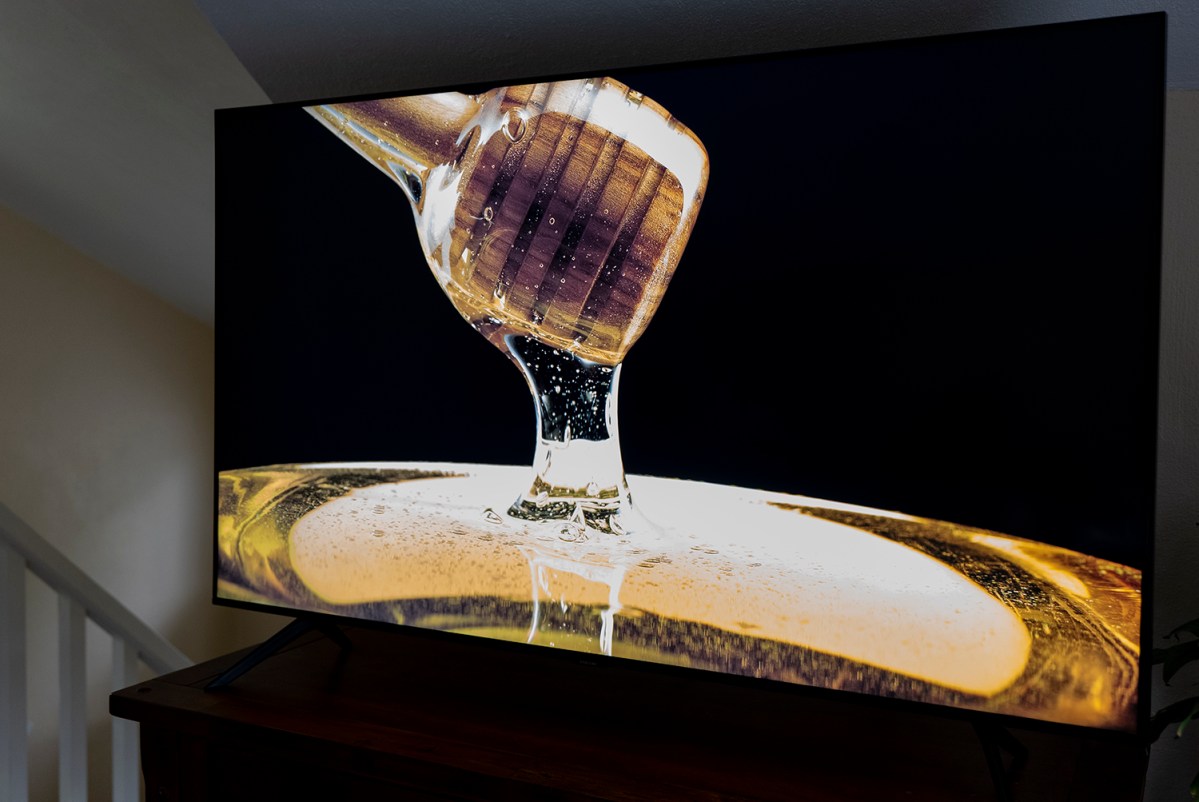
Our Take
I used the TU8000 for about a week and found myself gravitating to it more than I thought I would. The thin bezel mixed with great upscaling and surprisingly good sound quality made for a really pleasant watching experience. Sure it has its downsides and the vignetting can be distracting at times, but overall it does a very satisfactory job with its laundry list of promises. Samsung really had its work cut out for itself when it set such high bars with its marketing, but the company largely does well enough in all those categories. It’s not an industry leader and it’s not supposed to be. For a pretty budget-friendly television, I think many people will be perfectly happy with the Samsung TU8000, especially if you find it on sale.
Is there a better alternative?
We’re still waiting to check out the TCL 5-Series for 2020 that looks to be a real stunner, but even though it’s a year old the 5-Series from 2019 is still a pretty comparable choice to the TU8000. You might also want to consider the new Vizio M or V series, as both offer sets at close to or lower price points than the TU8000 for the same size or larger. We’ll update this post when we’ve had a chance to evaluate all the competition and provide clearer guidance.
How long will it last?
With three HDMI ports and one of them eARC, I feel confident that you can get a lot of work out of this TV. It’s built technologically to last well into the future, and the quality feels solid.
Warranty
Samsung offers a one-year parts and labor warranty for home use and a 90-day parts and labor warranty for commercial use.
Should you buy it?
I’m going to reserve judgment here. I think this is a fine television that shows pretty good value at its $500 price point for a 55-inch set. If I didn’t know that Vizio had two potential competitors coming soon and if TCL didn’t seem to really show promise with its 2020 5-Series, this might be an easier call to make. However, there is a lot of competition coming for the Samsung TU8000 heading into the Fall, so I think if you can wait a bit to make your decision, that’s probably the best choice right now. We will update this recommendation once we have a chance to fully evaluate the field.

